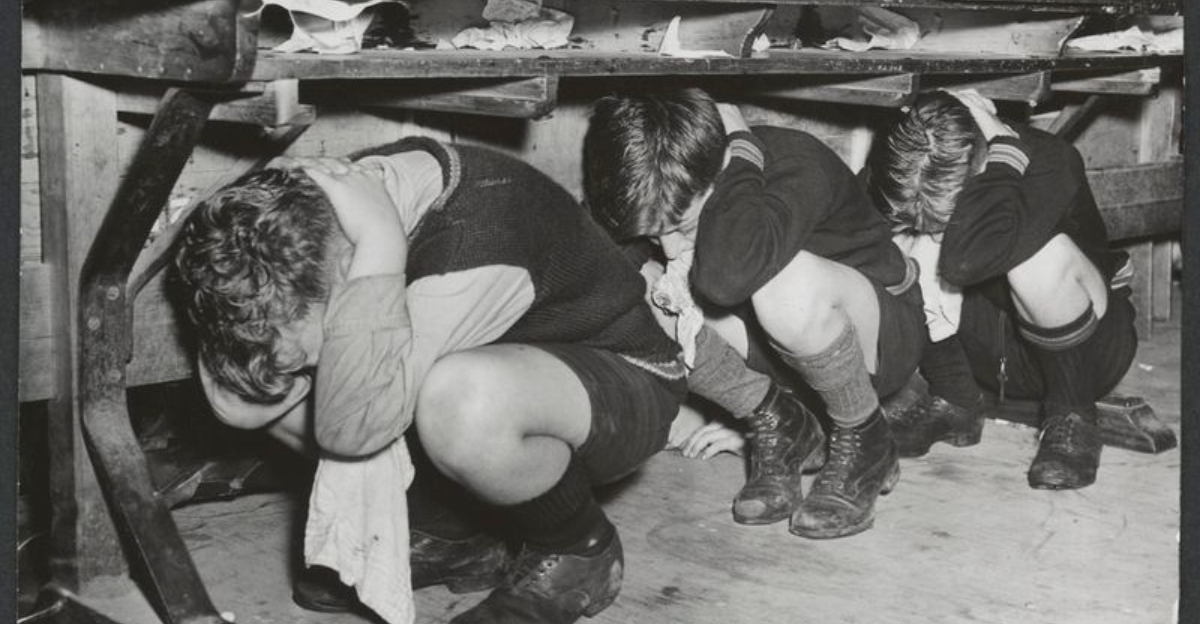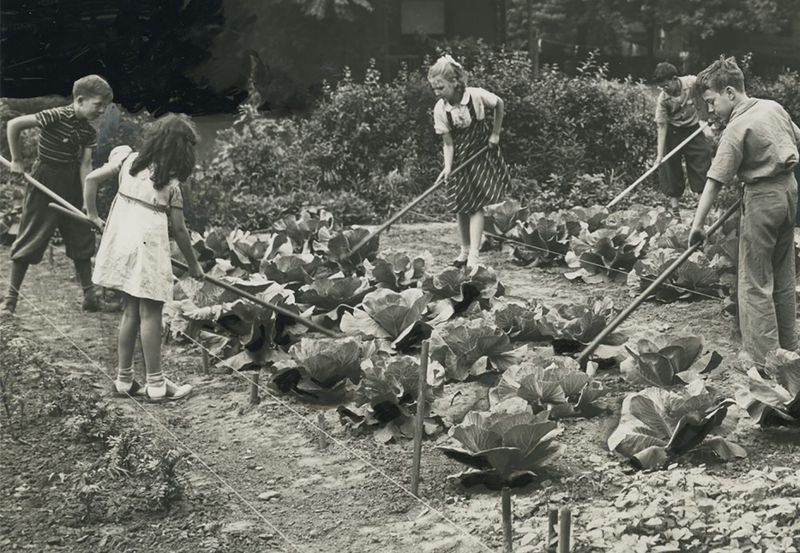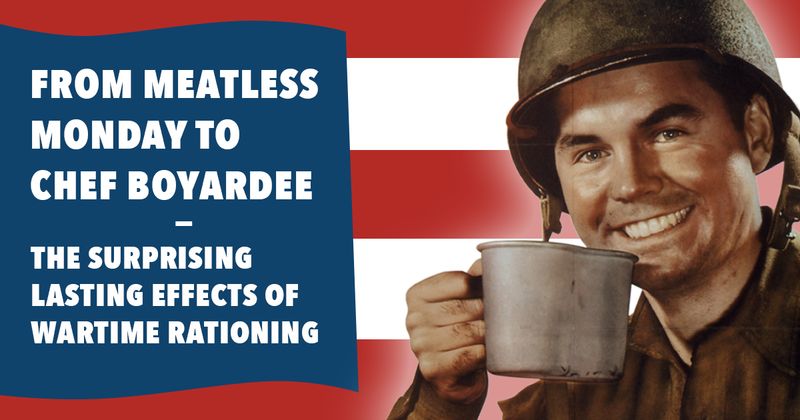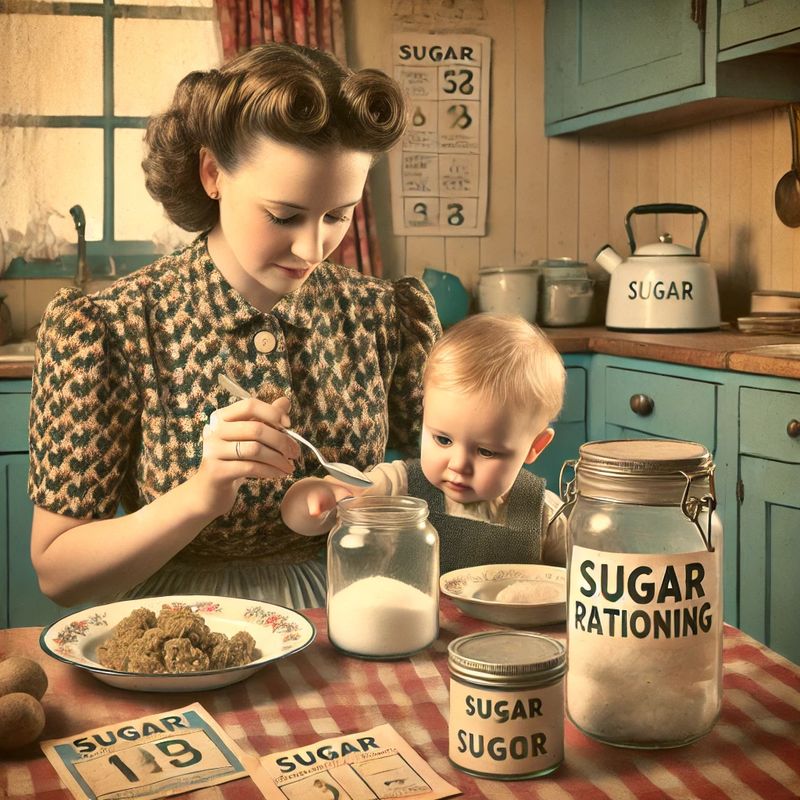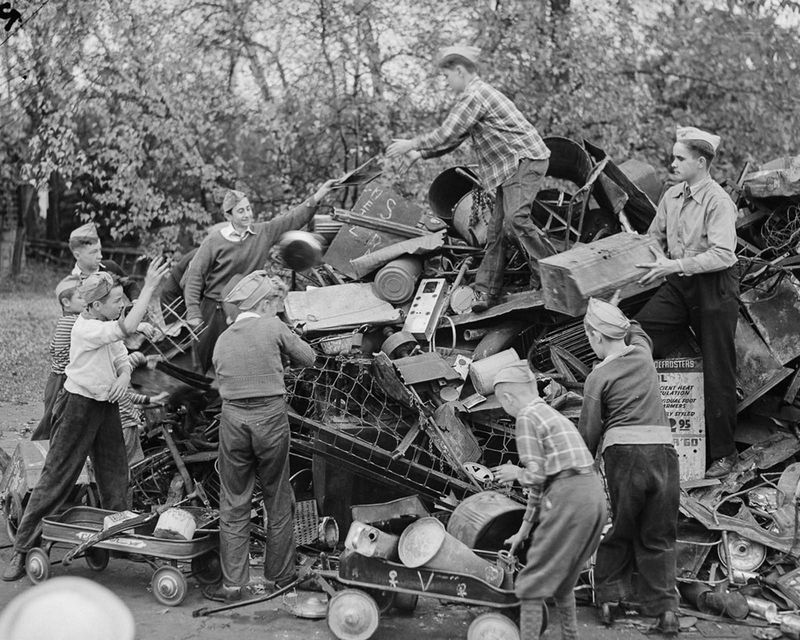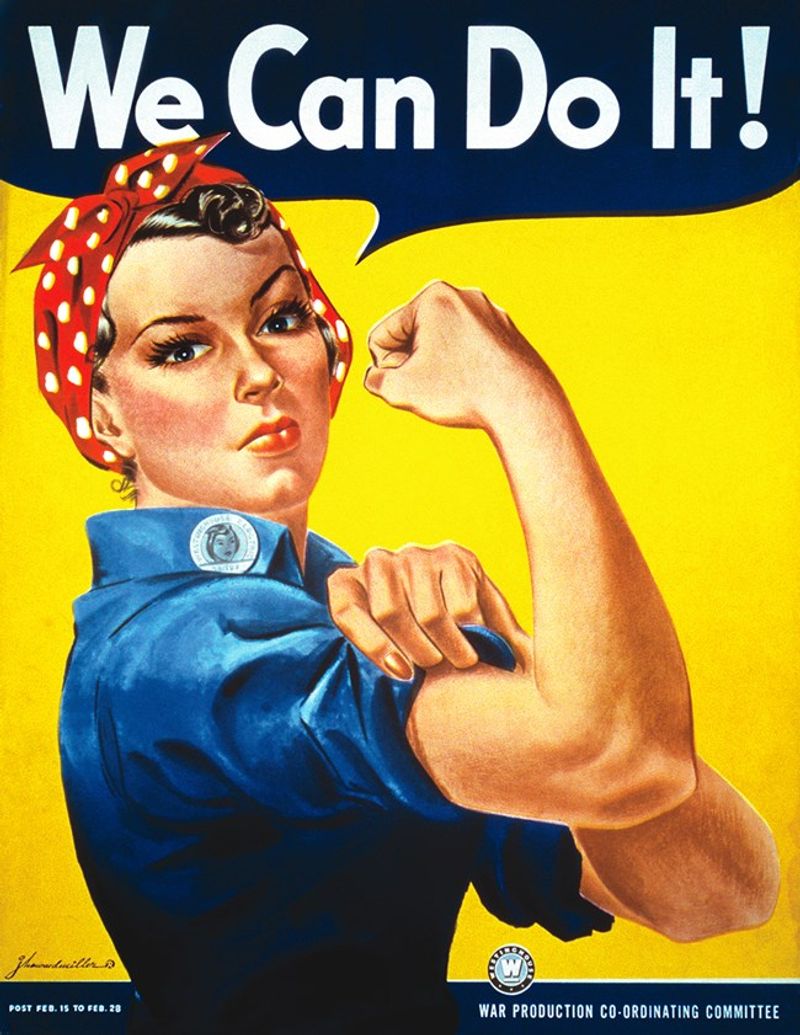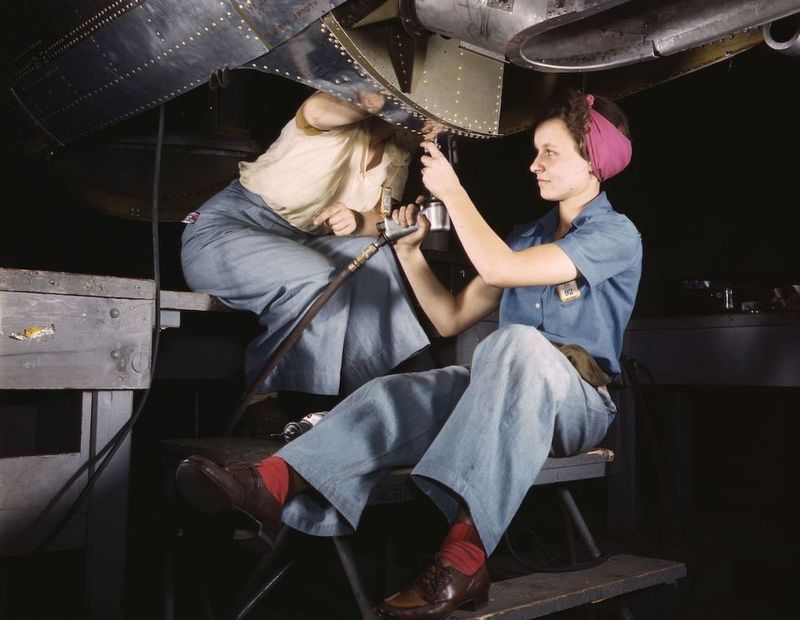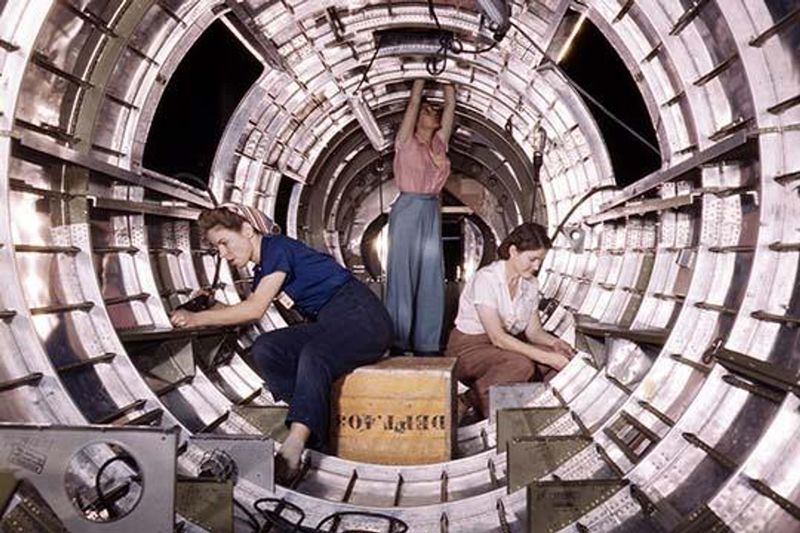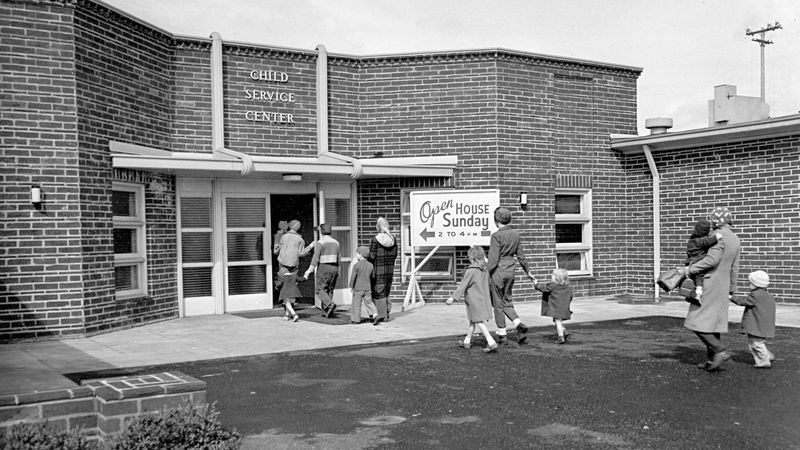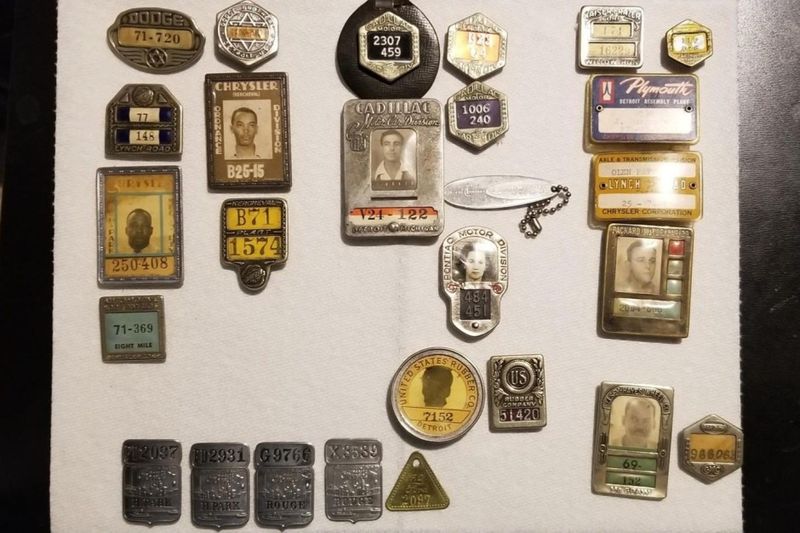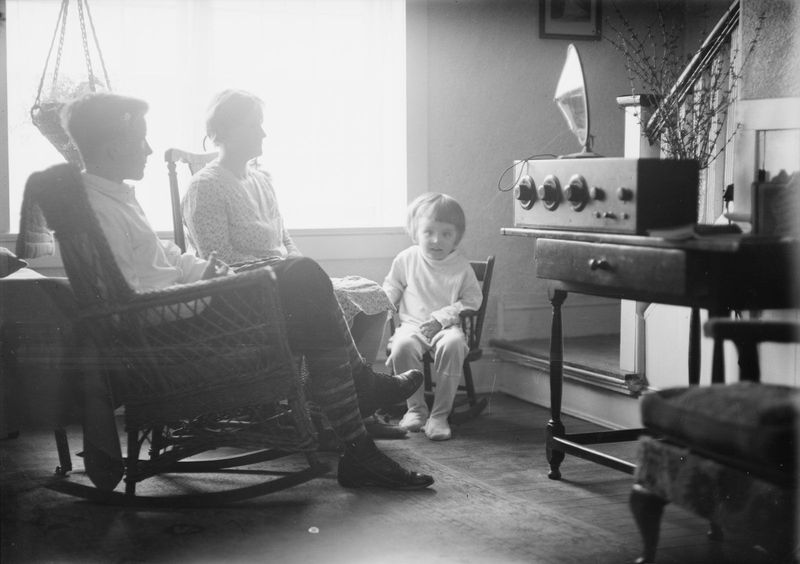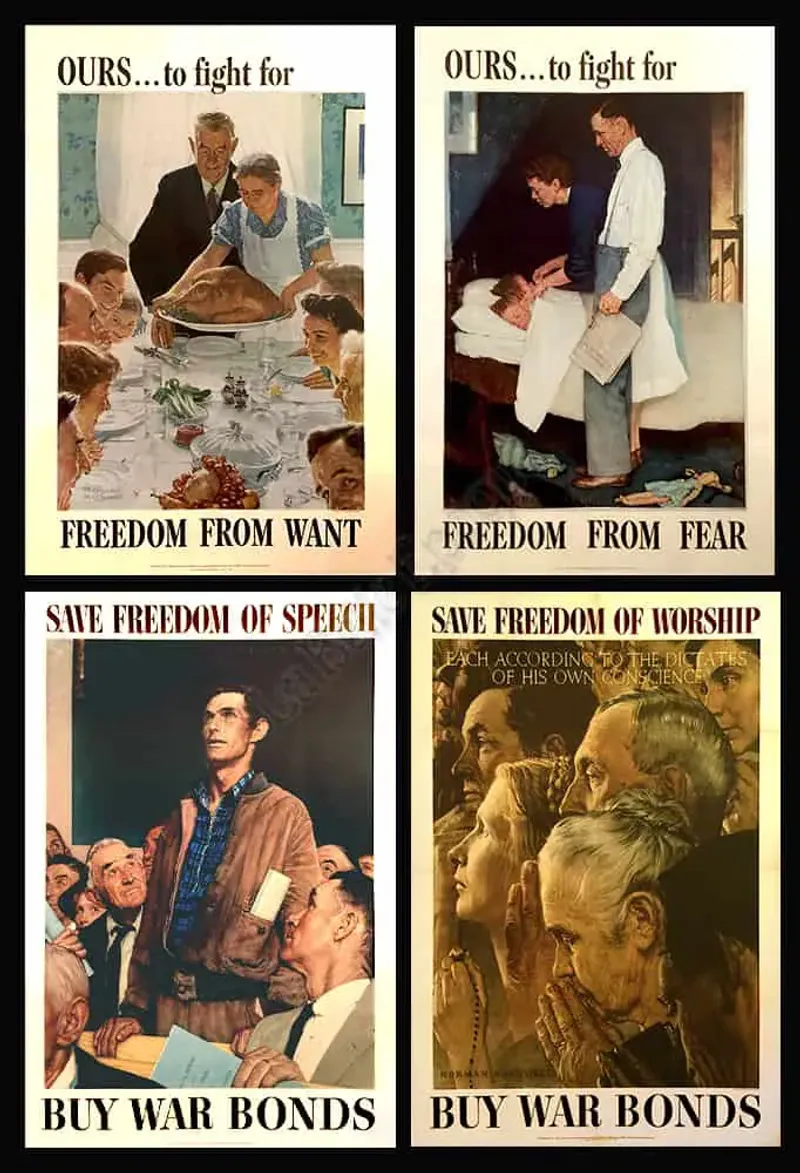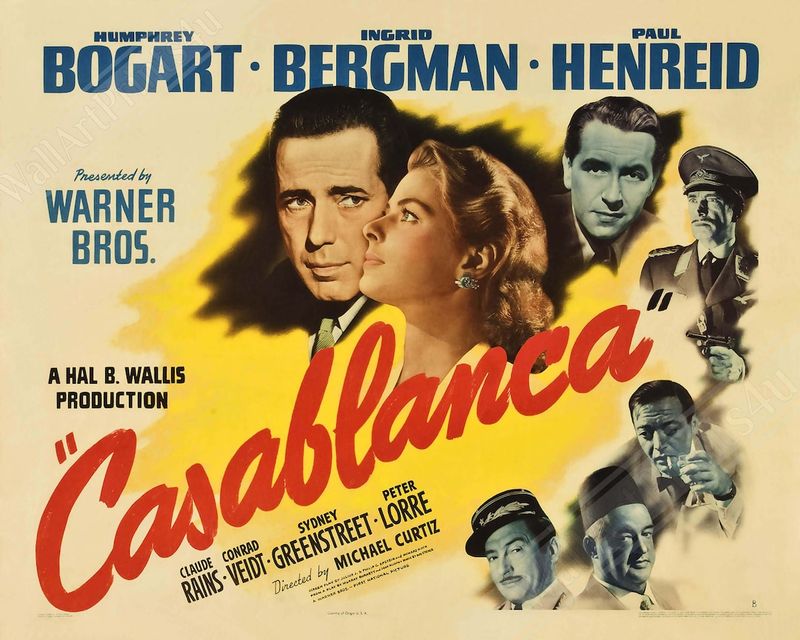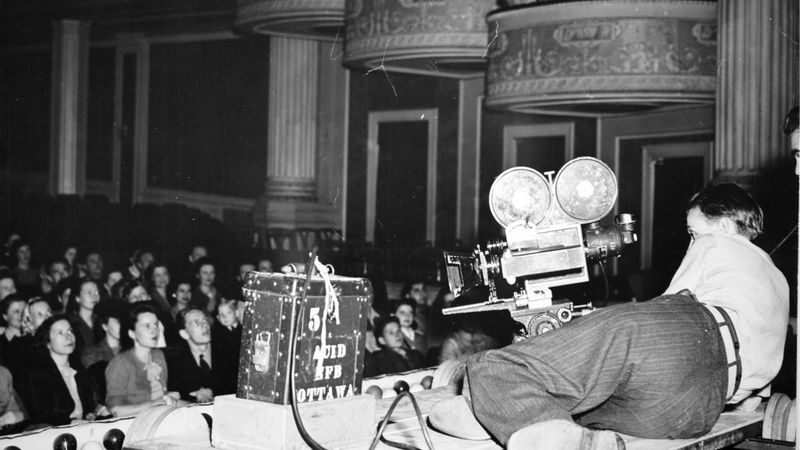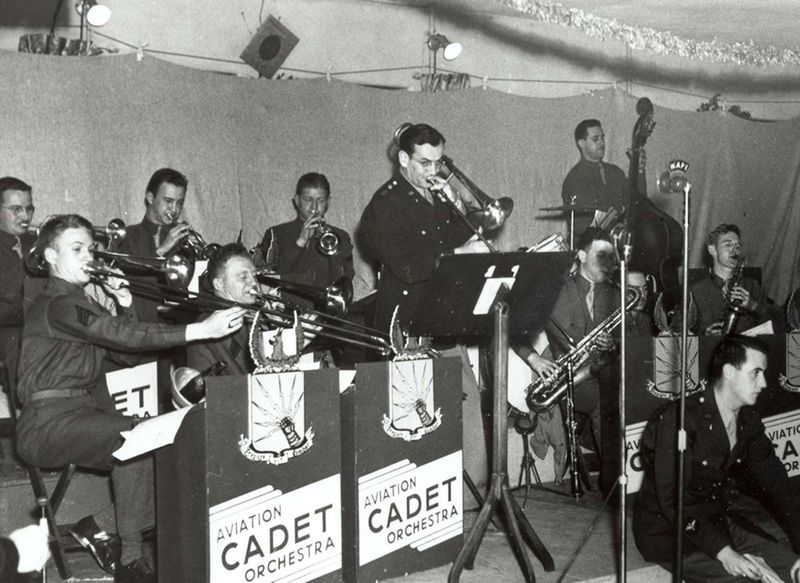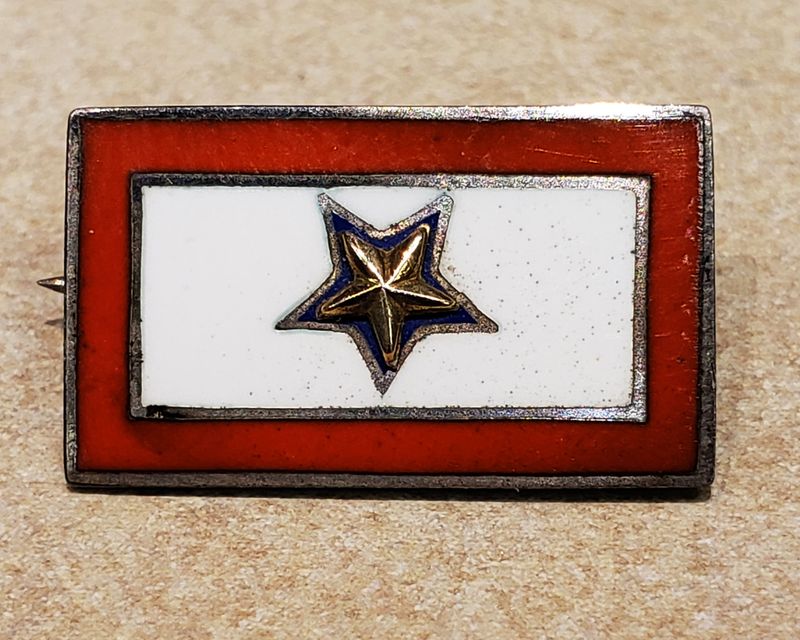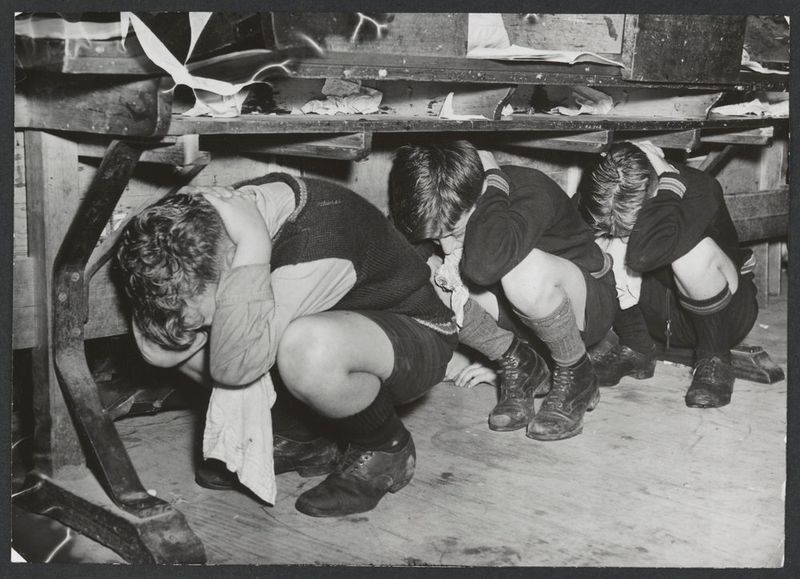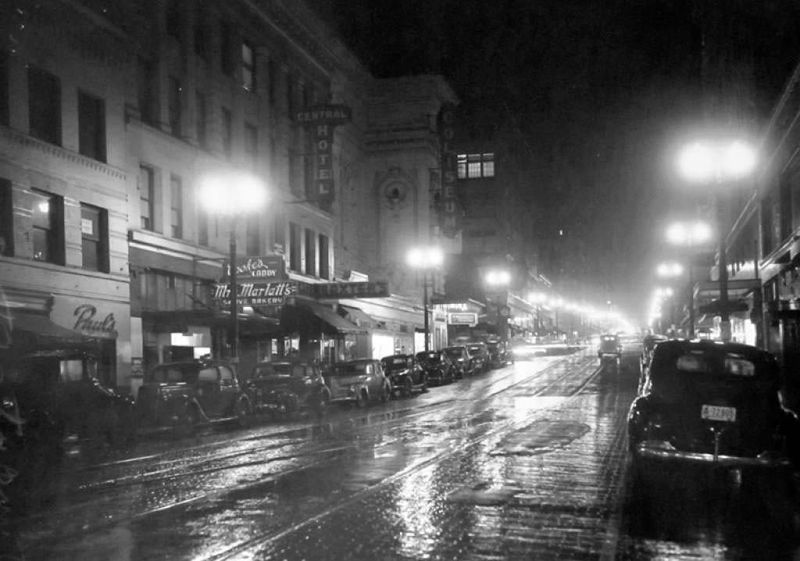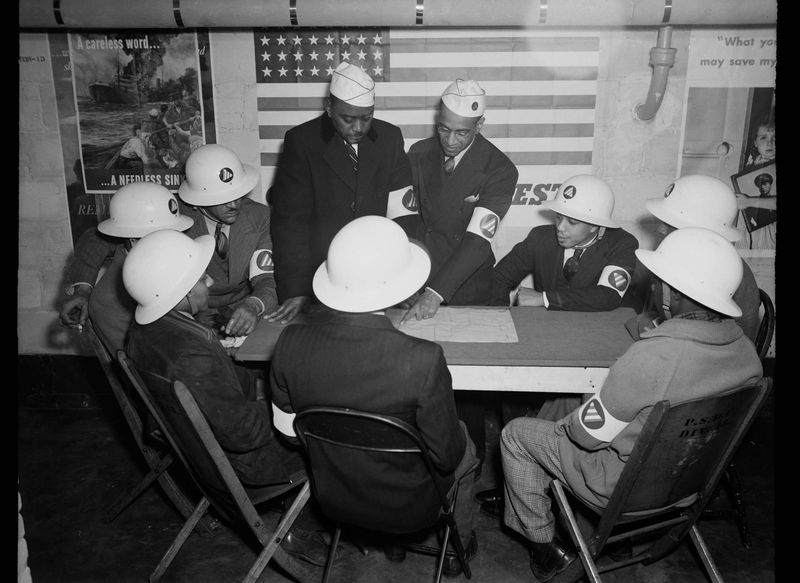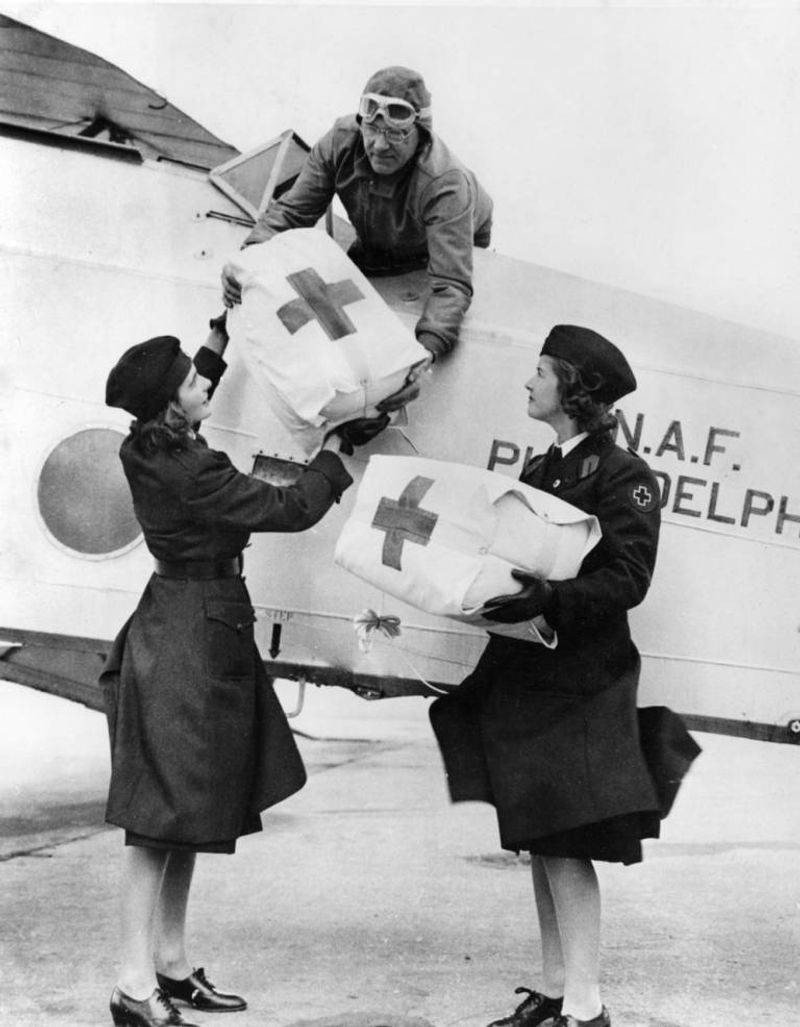World War II didn’t just transform battlefields across the globe – it revolutionized everyday American life.
From 1941 to 1945, citizens faced unprecedented changes in how they ate, worked, and connected with one another.
The war effort touched nearly every aspect of daily routines, creating lasting shifts in American culture that we still feel today.
1. Ration Books Became Household Essentials
The government issued these small booklets containing stamps to every American, from newborns to grandparents. Each stamp allowed purchase of scarce items like sugar, meat, coffee, and gasoline.
Families learned to budget their points carefully, often trading stamps with neighbors. Running out of ration stamps meant going without until the next month’s allotment arrived.
Counterfeiting ration stamps became a serious crime, with penalties including hefty fines and imprisonment.
2. Victory Gardens Sprouted Everywhere
Americans transformed backyards, vacant lots, and even rooftops into productive mini-farms. These gardens produced nearly 40% of all vegetables consumed in the country during wartime.
Children participated enthusiastically, with schools creating garden clubs and competitions. Even Eleanor Roosevelt planted a victory garden on the White House lawn, inspiring millions.
Community gardens fostered neighborhood unity while providing crucial food supplies.
3. Meatless Mondays Became Patriotic Duty
Restaurant menus proudly advertised special meatless options on Mondays, while newspapers published creative recipes using meat alternatives. Families embraced dishes featuring beans, eggs, and cheese instead of their usual beef or pork.
Government posters reminded citizens that skipping meat one day weekly freed up thousands of tons for soldiers overseas. Even Hollywood stars publicly supported the campaign.
This voluntary sacrifice created a sense of shared purpose across social classes.
4. Sugar Rationing Transformed Cooking Habits
Sweet treats became rare luxuries as families received just half a pound of sugar per person weekly. Homemakers clipped recipes for honey cakes and molasses cookies from newspapers and shared sugar-saving tips over backyard fences.
Children’s birthday parties featured smaller cakes or none at all. Many Americans grew accustomed to drinking coffee black for the first time.
Home canning became challenging without adequate sweetener, forcing creative preservation methods.
5. Scrap Drives United Communities
Children pulled wagons through neighborhoods collecting metal pots, rubber tires, and old newspapers. Schools competed fiercely to gather the most materials, with winners receiving recognition in local papers.
Even Hollywood got involved – a famous scrap metal pile in Rockefeller Center included actress Hedy Lamarr’s automobile. Communities organized “Tin Can Tuesdays” and “Rubber Drives” with military precision.
Americans donated an astonishing 6 million tons of paper during the war years.
6. Rosie the Riveter Inspired Women Workers
“We Can Do It!” declared the iconic poster featuring a strong-armed woman in factory clothes. This powerful image represented the six million women who entered the workforce during wartime, many taking traditionally male jobs in shipyards and aircraft plants.
Women operated drills, welders, and heavy machinery while earning unprecedented wages. For many, these jobs provided their first taste of financial independence.
Though intended as temporary, this massive workforce shift permanently altered American gender roles.
7. Factory Coveralls Became Fashion Statements
Women’s workwear underwent a revolution as millions donned practical denim coveralls and sturdy boots. Hair was carefully tucked under bandanas to prevent dangerous entanglements with machinery.
Magazine features showed female workers looking capable and stylish in their new uniforms. Some factories held “Miss Victory” contests where women were judged on both appearance and production skills.
After work, many proudly wore their coveralls downtown, symbolizing their contribution to the war effort.
8. Aircraft Assembly Lines Welcomed Female Hands
Aircraft factories became symbols of women’s wartime capabilities. Previously inexperienced women mastered precision riveting techniques in just weeks, building bombers and fighter planes with remarkable skill.
The term “Rosie the Riveter” originally came from a popular song about these workers. At Boeing, women constructed nearly 7,000 B-17 Flying Fortresses, essential to Allied bombing campaigns.
Factory floors transformed to accommodate smaller hands and different heights, innovations that improved efficiency for all workers.
9. Childcare Centers Emerged as Wartime Necessity
The Kaiser Shipyards in Portland created America’s first 24-hour childcare centers, complete with hot meals and medical services for workers’ children. Mothers could visit during lunch breaks, maintaining family bonds despite long shifts.
These revolutionary facilities cared for over 7,000 children daily at their peak. Professional teachers provided educational activities rather than mere babysitting.
Though most centers closed after the war, they established precedents for modern childcare and demonstrated working mothers’ effectiveness.
10. War Job ID Badges Became Status Symbols
Colorful identification badges with photographs became prized possessions for defense workers. These badges granted access to restricted factory areas and served as tangible proof of one’s contribution to victory.
Workers proudly wore their IDs even when off-duty. Each badge displayed a unique number and security clearance level, with higher clearances carrying special prestige.
Many families preserved these badges as treasured mementos, passing them down to future generations as evidence of their role in history.
11. Radio Brought War News Into Every Home
Families gathered around console radios each evening for news bulletins and presidential addresses. Edward R. Murrow’s dramatic broadcasts from London during air raids made distant battles feel immediate and personal.
The phrase “We interrupt this program…” became heart-stopping, potentially signaling major developments. President Roosevelt’s “Fireside Chats” reached 70% of American households, creating a sense of shared national purpose.
Radio programs integrated war themes, with even comedy shows promoting bond sales and conservation.
12. War Bond Posters Decorated Every Wall
Vibrant, emotionally charged posters urged Americans to invest in victory through government bonds. Famous artists and illustrators contributed striking designs featuring soldiers, children, and patriotic symbols.
Schools held bond drives with students competing to sell the most. Movie theaters displayed giant thermometers showing community progress toward bond quotas.
Norman Rockwell’s iconic “Four Freedoms” series, inspired by Roosevelt’s speech, became particularly effective in promoting bond purchases across all social classes.
13. Hollywood Films Became Wartime Propaganda
Major studios produced films glorifying Allied forces while demonizing enemy powers. Stars like Jimmy Stewart and Clark Gable enlisted for actual combat, enhancing Hollywood’s patriotic image.
The government established the Office of War Information to collaborate with filmmakers on appropriate messaging. Movies like “Mrs. Miniver” and “Casablanca” subtly reinforced Allied solidarity while entertaining audiences.
Even cartoons joined the effort, with Donald Duck and Bugs Bunny appearing in military-themed shorts promoting bond purchases and resource conservation.
14. Newsreels Brought Combat Footage to Theaters
Before feature films, audiences watched dramatic black-and-white combat footage accompanied by stirring narration and music. These 10-minute newsreels provided Americans their only visual connection to overseas battles.
Theater attendance surged during wartime, partly due to the public’s hunger for news. Government censors carefully reviewed footage, removing images deemed too disturbing or potentially damaging to morale.
Cameramen risked their lives to capture this footage, with several killed while filming combat operations.
15. Swing Music Lifted Wartime Spirits
Glenn Miller’s orchestra and other big bands toured military bases, playing upbeat dance music that temporarily banished wartime worries. The infectious rhythms of swing became America’s soundtrack during these challenging years.
USO dances brought together service members and young women volunteers for evenings of supervised socializing. Songs like “Boogie Woogie Bugle Boy” and “Don’t Sit Under the Apple Tree” captured the era’s blend of patriotism and youthful energy.
Radio broadcasts of live performances reached millions of homes.
16. Gold Star Banners Signaled Ultimate Sacrifice
A somber gold star on a small banner hanging in a front window told neighbors that a family had lost someone in service. These poignant symbols appeared in windows across America, from wealthy neighborhoods to modest apartments.
Communities developed quiet rituals for supporting Gold Star families. Mail carriers and delivery people learned to approach these homes with special respect.
The Gold Star Mothers organization provided mutual support to women who had lost sons, creating lasting bonds through shared grief.
17. Air Raid Drills Became Routine
The wail of air raid sirens sent Americans scrambling to designated shelters, even in inland cities far from potential bombing targets. Schools practiced “duck and cover” drills, with children hiding under desks or in hallways.
Volunteer air raid wardens patrolled neighborhoods ensuring complete blackout compliance. Cities on both coasts constructed concrete bunkers and reinforced basement shelters.
Though no significant air attacks occurred on mainland America, these drills maintained vigilance and reinforced the war’s reality for civilians.
18. Blackout Curtains Darkened American Nights
Heavy black fabric covered windows in coastal cities, preventing even a sliver of light from helping enemy submarines target ships silhouetted against illuminated shorelines. Families faced fines for light violations, with neighborhood wardens enforcing strict compliance.
Car headlights were partially painted over to reduce visibility from above. Outdoor advertising and streetlights went dark in many areas.
These measures created an eerie nighttime atmosphere that reinforced the sense of a nation under threat.
19. Civil Defense Volunteers Protected Communities
Ordinary citizens donned white helmets and armbands to serve as air raid wardens, fire watchers, and emergency responders. These volunteers, often too old or young for military service, patrolled neighborhoods ensuring blackout compliance and preparing for possible attacks.
Training sessions taught first aid, firefighting, and emergency communication techniques. Women comprised nearly 40% of these volunteers, challenging traditional gender roles.
The Civil Defense Corps created a structured way for every citizen to contribute, regardless of age or physical ability.
20. Red Cross Volunteering Became Women’s Patriotic Expression
Women in crisp blue uniforms with white Red Cross armbands became fixtures in train stations, hospitals, and blood drives. These volunteers wrote letters for wounded soldiers, prepared care packages, and provided crucial emotional support to military families.
Knitting circles produced millions of socks, scarves, and sweaters for troops overseas. Red Cross chapters organized blood donation campaigns that collected 13 million pints during the war years.
For many women, this volunteer work offered meaningful connection to the war effort.
